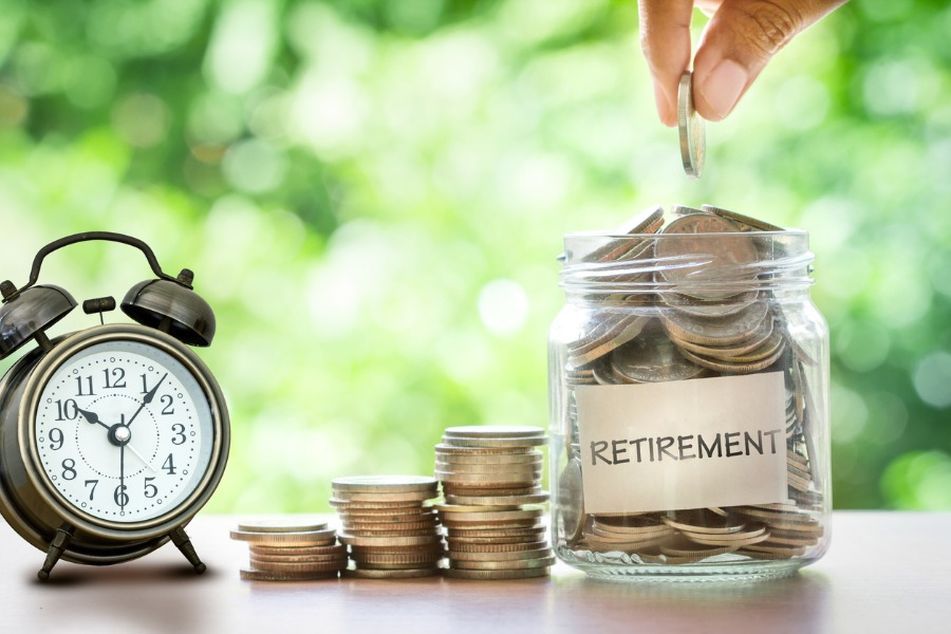Investing for retirement: why we need it

Investing for retirement is necessary since social security is just not enough for retirees. What are the options? Read on to know more
Retirement is one of the most important aspects of wealth management and financial planning. Everyone knows it’s inevitable and can be a challenging time if not adequately prepared for.
It’s essential for investors to explore as many investing options as possible to ensure that they can live comfortably when they retire. There are many investing options that can provide passive income or boost retirement savings accounts when that time comes.
By exploring and understanding these investment options, the risks they have, and the opportunities they present, it’s possible to assemble a well-rounded investment portfolio that can see retirees through their golden years.
In this article, InvestmentNews offers some insight into where to put retirement money after retirement. We’ll go over other crucial questions like where is the safest place to put your retirement money? What are the best investments for retirement? Here’s a guide to investing for retirement.
The need for investments in retirement
Many decades ago, the pension plan was the go-to retirement instrument for much of the nation’s workforce. In 1978, US Congress formally introduced the now-famous Revenue Code Section 401(k) or what every American knows as the 401(k) plan.
Many private sector companies soon adopted the 401(k) plan over the traditional pension plan to provide employees with retirement income. While the 401(k) gives plan participants the opportunity to aggressively fund and invest for a larger retirement nest egg, the pension plan provides a stable fixed income during retirement.
Pension plan vs. 401(k) plan
So, which is better, the pension plan of yesteryear that is now mostly offered by public sector jobs, or the 401(k) which dominates the private sector?
The answer to that question remains up for debate, but generally, the pension plan is more suitable for low-income wage earners who are unlikely to switch jobs or make a career change.
The reason? Pension plans offer more stability and security than 401(k) plans, and pension plans can provide retirement income for as long as the plan holder lives.
What’s more, pension plans do not follow employees unlike 401(k) plans, which are converted to Roth 401(k)s when the plan holder works for another company. Regardless of the company’s performance, retirees with a pension plan still get the same monthly benefits.
On the other hand, the funds in a 401(k) may not last as long. This will depend on several factors like:
- the amount in the plan
- investments contained within the 401(k) and their returns
- taxes
- the effects and severity of inflation
- other fees and expenses
Plan holders of a 401(k) can determine how long their funds will last in retirement if they estimate the monthly distributions and know the exact amount of living expenses. With these values known, 401(k) plan holders can use a retirement calculator to get a glimpse of how long the funds will last.
Why have investments for retirement?
There are good reasons for having investments to ensure that retirees have more funds when they retire:
1. Increased longevity
Many more people are living longer, and well past their retirement age. The average life expectancy of an American who reaches the age of 65 is now 85. Some retirees even live past 90; still others live to be 100 or older.
If investors decide to retire upon reaching the age of 65, they will have to account for the possibility that they will live for at least another 30 years. Retirement plans like 401(k)s may not last that long.
2. Life spans exceeding health spans
Increased longevity is a double-edged sword; while you might live longer, your health will not stay good. That’s simply because the human body is like a machine – the longer you live, the more damage your body accumulates.
This is known as the wear and tear theory. So, as you get sicker as you get older, medical treatments for preserving your quality of life can eat up a large part of your retirement savings. This is a major concern for many seniors and retirees.
3. Social Security benefits not being enough
If someone has to depend solely on Social Security benefits, it’s unlikely that this will be sufficient for their retirement. Social security was not designed to provide retirees with their exact employment income in retirement. These benefits are meant only to replace at most 40% of a retiree’s pre-retirement earnings. There are even discussions in US Congress that put social security benefits’ sustainability into question.
And even with the Cost-of-Living Adjustments (COLA) made to social security, this is intended to only be enough to barely cover rising costs of basics due to inflation. The average social security check amounting to $1,705.79 per month in 2023 will only get an increase of $55 in 2024.
From the table below, we can see that social security is not always in keeping pace with inflation, making retirement investments more necessary. Note: the 2024 Social Security COLA increase is set at 3.2%, while 2024 inflation is expected to be between 3.4 to 3.5%.
| Social Security Cost-of-Living (COLA) Adjustments for the past 5 years | ||
| Year | % Increase | Inflation Rate |
| 2019 | 2.8% | 2.3% |
| 2020 | 1.6% | 1.4% |
| 2021 | 1.3% | 7% |
| 2022 | 5.9% | 6.5% |
| 2023 | 8.7% | 3.4% |
Which investments are best for retirement?
There are a few investment options for those who want to increase their retirement income or savings. Here are some suggestions to boost retirement income or beef up a retirement fund.
Income annuities
This is a contract with an insurance company where investors pay a specific amount monthly or in a lump sum. What investors get in exchange are regular income payments. Annuities are useful when retirees want to receive income for a certain period, or for the remainder of their lives. Investors can choose to get the income paid via their own lifespan or through their and their spouse’s lifespans.
While the money the investor puts into the annuity is held by an insurance company, it can accumulate with its tax deferred. When the investor wants to take disbursements, they can choose to receive an amount regularly or at an amount that’s adjusted for inflation. Financial advisors can guide retirees as to which type of annuity will best suit their needs.
Annuities have the benefit of providing guaranteed income, so these can be used as a hedge against the risk of retirees outliving their savings. A drawback to annuities is that it has a similar rule to 401(k) plans on early withdrawals. Investors must pay a 10% tax on withdrawals made before they reach the age of 59½.
Total return investment portfolio
Also known as total return approach, this investment portfolio gives investors income from a mix of:
- interest
- dividends
- capital gains
A portfolio of this sort consists of a diverse but balanced mix of stock and bond funds. The term “total returns” means a portion of the average annual rate of returns (income and appreciation) is spent over a longer period (e.g. 10-20 years) instead of spending income created by the portfolio.
A total return approach can be thought of as a “systematic withdrawal” strategy, where only a certain percentage of the investment is taken as a distribution each year. The distribution amount often ranges between 3% and 5% of the total value of the portfolio. This can provide a sustainable source of income for retirement, although there is no guarantee if it will last the investor’s lifetime.
Income-earning equities
This can be a more liquid investment or a portfolio of investments, as some equities can give income in the form of dividends. While not all stocks pay dividends, those that do may give higher dividends than others. Dividend yields of most stocks may not be as good as bond yields, but these dividend-paying stocks have great potential for capital gains and appreciation.
Speaking of stocks, this video suggests which stocks retirees should invest in. Spoiler alert: they’re tech stocks. The presenter claims that tech stocks, or more generally, innovation, drive growth in Nasdaq and the S&P500:
Tech companies like Apple have benefited from angel investors. Read our guide on angel investing for more on this investment option.
If investors build a portfolio of dividend-paying equities, they can expect income on a quarterly basis – this is true for Real Estate Investment Trusts (REITs). Should investors decide on dividend-paying equities from the stock market, they must take a good look at their dividend history.
The stocks, REITs, or other equities must have a good record of steady dividend payouts or increasing dividends over a long period. Stocks that have this consistency often make the list of dividend aristocrats or dividend kings on the S&P500.
Diversified bond portfolio
Until recently, fixed income instruments like bonds were considered a less viable income source for retirees. But as the Federal Reserve raised the short-term interest rate, bond yields followed. To illustrate, the 5-year US Treasury note yielded 1.37% at the beginning of 2022, but by end-May 2023, the yield shot up to 3.74%.
Investors can trade directly in individual bonds. This includes:
- US Treasury securities
- municipal bonds
- debt instruments issued by corporations
- bonds offered by government entities
- mortgage-backed securities
- bonds that originate in overseas markets
Yields can vary based on these factors:
- the credit quality of the issuing entity
- the bond’s time before maturity
- current market conditions
Many investors choose to invest in bond mutual funds, which are professionally managed, diversified portfolios of bonds from various issuers.
Investors can expect income payments periodically from the bond issuer based on the stated annual yield at the time they invest. They can hold the bond to maturity, at which time the principal will be repaid by the issuing entity. Or if they prefer not to wait, they can sell the bonds on the open market before their maturity.
The market value of a bond may differ from its face value, depending on the interest rate environment for the remaining time before maturity. If current market rates are higher than an existing bond’s yield, the bond must be sold at a discount to attract potential buyers. But if current interest rates are lower than the bond’s yield, the bond will sell at a higher price.
Beginning investors and even those starting out on investing for their retirement will be pleased to discover they have more options than previously thought. A good strategy to pick the right investments is to consider budget, risk tolerance, time horizon and financial goals.
Investors should also look at any tax advantages the investments offer. From there, the task of creating the most feasible and realistic retirement investment strategy will be less daunting.
Check our pages on retirement planning for tools and strategies on investing for retirement.
Learn more about reprints and licensing for this article.








